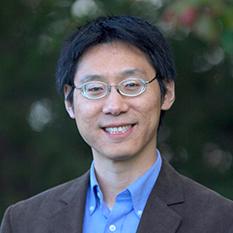In the past years, we have witnessed one of the most exciting and fast-paced technology breakthroughs in life science and medicine – the emergence of spatial omics, which is poised to fuel the next wave of biology revolution. Spatial omics has the potential to dissect how heterogeneous neurons are connected to form complex neural network in human brain to perform computing in cognition, emotion, and learning. It may generate high-resolution biomolecular and cellular map of each tumor to reveal its Achilles' heel for personalized treatment. I will begin with discussing the landscape of spatial omics technologies, and then focus on a new technology called DBiT-seq – microfluidic Deterministic Barcoding in Tissue for spatial omics sequencing (DBiT-seq) developed in our laboratory at Yale, which for the first time allowed for spatially resolved co-mapping of whole mRNA transcriptome and hundreds of proteins directly in human tissue sections at cellular level. Then, I will discuss our efforts to push the boundary to bring spatial omics to the mapping of clinical tumor tissues including archived FFPE samples, and finally discuss how this platform technology can lead to other spatial omics mapping such that the first-of-its-kind spatial epigenome sequencing at tissue scale and cellular level. Emerging opportunities and future perspectives in basic biology and clinical medicine enabled by spatial omics will be discussed.

Dr. Rong Fan is Professor of Biomedical Engineering at Yale University. His research focuses on the development and deployment of single-cell and spatial multi-omics technologies, often based on microfabricated tools, to study normal development and human diseases including cancer and autoimmunity. A microchip technology his laboratory developed for simultaneous measurement of 42 immune effector proteins in single cells, which remains the highest multiplexing to date for a single-cell protein secretion assay, has been commercialized and widely used by >100 pharmaceutical companies and medical centers in the U.S. and around the world. Recently, his laboratory developed a novel NGS-based spatial omics technology called DBiT-seq for spatially resolved transcriptome mapping, high-plex protein mapping, and spatial epigenome sequencing, which may find applications in a wide range of biomedical research fields. He is co-founder of IsoPlexis, Singleron Biotechnologies, and AtlasXomics. He is an elected fellow of the American Institute for Medical and Biological Engineering (AIMBE) and a senior member of the National Academy of Inventors.


